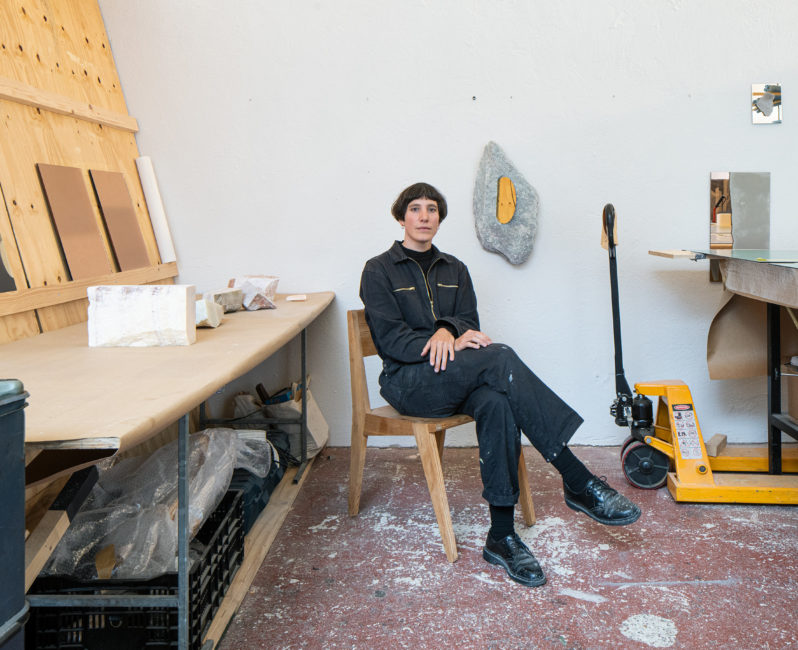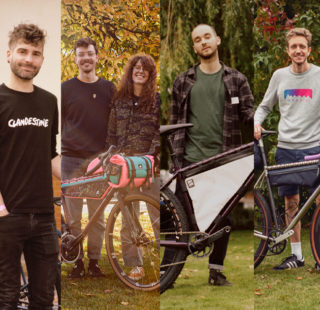This series is all about discovering the magical way that cycling not only benefits but enhances and elevates the thinking process.
Helping in the most simple processes right the way through to writing, journaling, image making and ultimately how it is a tool for mental clarity and a healing device for mind and soul. The bike has the obvious ability of transporting us all in the physical space but for some it takes them elsewhere internally too.
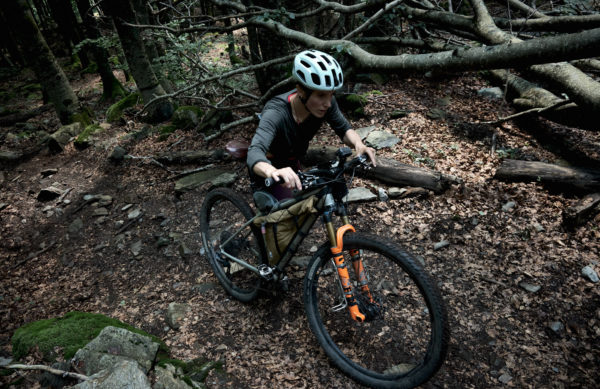
This week we speak with Quinda Verheul
So firstly hello! If you could introduce yourself and tell us where you are based?
//HI! Thanks Michael, such a pleasure to be part of this.
Just firstly want to say I love the statement above, about the bike transporting us. It reminds me of a description someone once made at one of the TCR events, it explained how there are two sorts of riders, you have the scientists and you have the poets. The scientists are all about numbers, counting calories and watts, where for the poet’s it’s about the experience, the journey. I learned to take care of the rational stuff, when I prepared and started training for races. But it really is about the journey for me, getting stronger gaining skills all to experience at best to be out there, to have the freedom to have that inner journey as well.”
My name is Quinda (Verheul) cyclist, occasional runner, artist and overall enthusiast, my studio is Rotterdam based. I work a lot with raw materials like rocks, concrete sand and mirrors. I’m inspired by big themes, such as the hydrological cycle of water, erosion of the earth and the human impact of this. To give an example open pit mines are one of my fascinations. We can blow up mountains to use the minerals to create the things we own around us, including you phone and the internet we are so fond of. My concern with open pit mines is that the mountains don’t grow back and we leave behind scarred land, man made craters.
To grasp these big themes I study rocks on mountain peaks and reflect and create pieces to make the spectator reflect. It’s quiet and the rock is not going anywhere. Clouds move by, sunlight strokes, or burns and moonlight comes and goes yet the rock has little to no reaction to the changing conditions. All that I translate in sculptures and artworks.
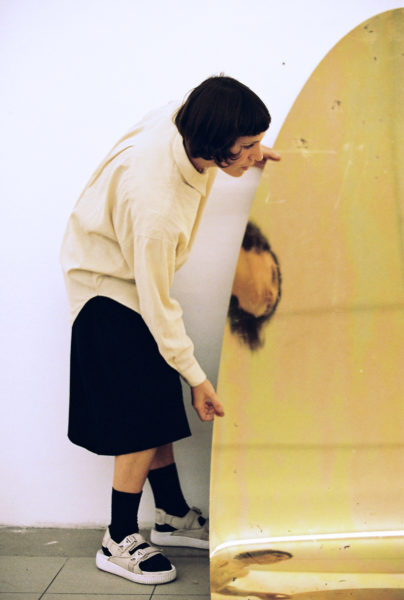
Could you talk about how you came into cycling?
//It was 2016 and I was living in Berlin and had this insane idea to ride my bike until I didn’t want to anymore. So I bought a road bike and a few months later I sold all my stuff in my apartment and went on a journey with no destination. I ended up riding south to chase the sun. While chasing the sun, I got curious about Morocco so I went there for a while and eventually after some time I got the itch to go east and took the plane with my bike to Thailand and Indonesia where I lived and worked for almost a year.
I then moved to Rotterdam and did not have much interest in cycling for a while.
It got more serious when I decided to sign up for the Atlas Mountain Race and spent time on Training schedules and so on. After the event I knew I wanted more of this and continued preparing for other events while mostly playing bikes in between.
“..you have this raw intense experience just you and the landscape, nothing else, and by challenging yourself you are growing stronger overcoming fear and you learn.”
We met last year on the AMR and since then you have taken on a great many more incredible races through some beautiful parts of the world, what draws you to these kinds of events?
//My first reaction is that I’m mostly curious about where the ribbon will take me. What I mean is, you might know the place, the course the mountains, yet everything is still possible and you have no idea about the potential surprises awaiting on the horizon.
It’s a very good question though, makes me reflect and takes me to the point where I sometimes wonder why cycling, why all the hours of preparing and challenging myself through events at all? Without being negative I believe it’s mandatory to not take it too seriously. I tend to sometimes get to that point where I take it all too serious. The reason to keep doing what I’m doing and I get as far as this, race is another level of adventure, a thrill to push beyond your limits, to ride through the dark and to do the things you thought impossible. To encounter situations that during a normal bikepacking trip you will never encounter.
“it derives from the idea to look at the inner self, to learn, to grow, to be truly honest and reflect on who you are and how you live in this world”
Bikepacking is great with the camping and the coffee and multiple stops, it is something I can really enjoy too. Yet the thrill of an event, the clock that won’t stop, the other riders you meet and those conditions of a race just push me to stretch that comfort zone. By doing that you have this raw intense experience just you and the landscape, nothing else, and by challenging yourself you are growing stronger overcoming fear and you learn.
It’s probably a lot about adrenaline and I might just be a junky 😌
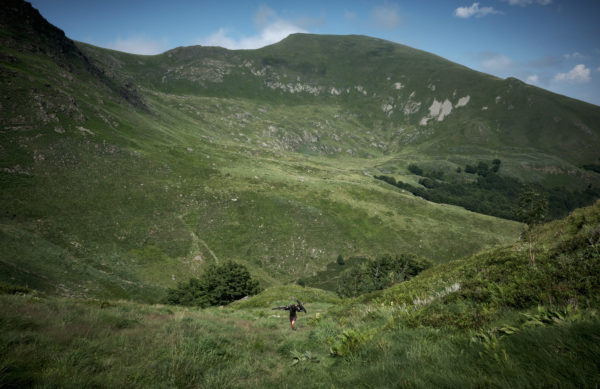
Haha, i can certainly relate, and its great to be able to enjoy both ends of the spectrum, so moving onto your artistic practice, It seems to encapsulate a sense of simplicity and complex wonder simultaneously, What inspires you to create these forms or pieces?
//With my installations I’m aiming to make the perceiver, the visitor part of the artwork, they become the artwork, I like to call it a performance. However the visitors might not know they are part of it, unless they read these words. The smaller pieces do have this same ability, it derives from the idea to look at the inner self, to learn, to grow, to be truly honest and reflect on who you are and how you live in this world, this landscape. In essence living in harmony with your surroundings and therefore being your best self. It has relation to Daoism, but also refers to the ideas of Alexander von Humboldt who was an adventurer and scientist that believed all is one, that everything is connected.
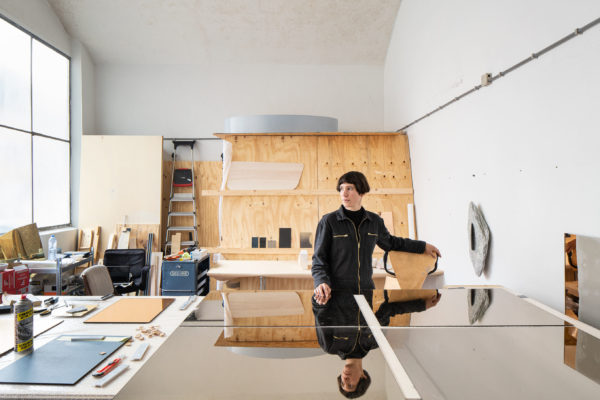
Inspiration for the pieces can come from anything really, feelings and observations in combination with books or good conversations. Recently I finished the book written by Vince Beiser, “The World in a Grain” about the massive demand on sand and how sand is after water a scarce product. Think about our roads, concrete buildings, glass and our phones and computers it’s all sand a very specific kind of sand.
I can be fascinated with the destructive force we as humans can perform on our planet. A lot of it is not visible for us, mining and the giant forces behind that, we are either blind or its literally hidden from us. Although this response might seem like a meander going all over the place, to me it is all very connected and of similar relevance.
With this series of conversations focusing on how cycling transports the mind could you talk about what it does for you? And how it maybe lends itself to your work?
//I used to think the two were separated. Two different things. The cycling would be to get away from “work”. But I realised especially with these events, that I get to experience the rawness of the landscape, the changing conditions. The light, the clouds and find the moon behind the mountain. All that contributes to my art practice.
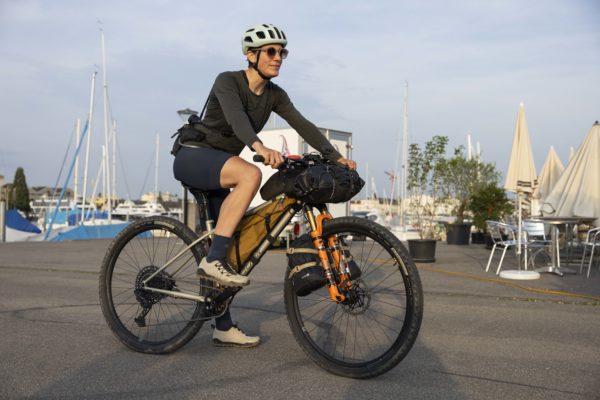
Any closing points? Or things you would like to shareMaybe a favourite route you’ve recently set out on?
// I had the plan to race Further, and had the chance to pre-ride the route.
The @furtherjournal route has blown my mind, went beyond my expectations and threw a new light on how to travel with a bike.
You will ride until you can’t ride any further, you will carry your bike over the mountains, through valleys until riding will be more efficient again. You will find yourself at places where moving forward is the only option back to comfort.
And besides that you move through fairytale landscapes, with ever changing conditions and meeting the most mystic creatures on the route.
The route is an art piece.
Amazing, thanks so much for your time Quinda,
//Thank you!
To see more of Quinda’s artistic practice – follow here and to dive into her world of cycling follow here.
And to read more about the Further Journal Race Route – check out the events page – and stay upto date with the event itself on instagram here.
A huge thanks to Camille of Further Journal, Rugile Kaladyte and Frank Hanswijk for the stills used in this interview.
We hope you enjoyed you issue 2, and hope to bring you issue 3 in the next few weeks.
Last modified: 24th September 2021
